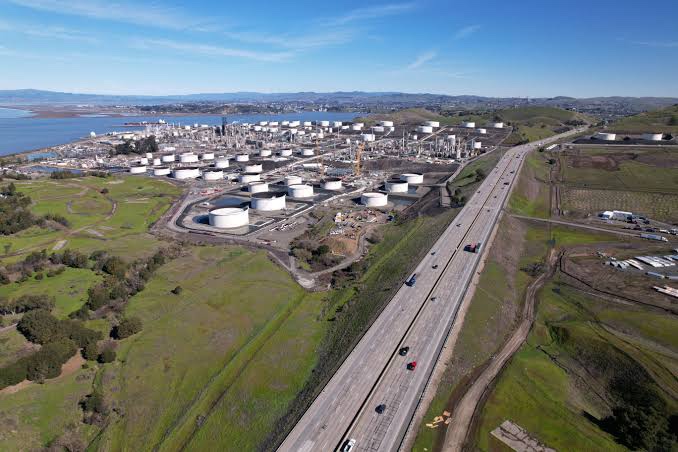Oil prices surge 2% to nearly 10-month high on OPEC’s rosy outlook for tight supplies

Oil prices experienced a notable surge, climbing approximately 2% to reach a nearly 10-month high. This upward trajectory was driven by a revised supply outlook and optimism from the Organization of the Petroleum Exporting Countries (OPEC) regarding the resilience of energy demand within major global economies.
As of 11:15 a.m. EDT (1515 GMT), Brent futures witnessed a robust increase of $1.64, equivalent to 1.8%, pushing the price to $92.28 per barrel. Simultaneously, U.S. West Texas Intermediate (WTI) crude exhibited a noteworthy gain of $1.91, representing a 2.2% uptick, elevating it to $89.20 per barrel. Both Brent and WTI benchmarks maintained an extended period of overbought status, marking an eighth consecutive day, and appeared to be on course for their highest settlements since November 2022.
The key driving force behind this price rally was OPEC’s unwavering confidence in robust growth for global oil demand, specifically projecting growth in both 2023 and 2024. Their assessment is founded on indicators suggesting that major economies are displaying greater strength than initially anticipated. OPEC’s monthly report outlines a forecast for global oil demand to increase by 2.25 million barrels per day (bpd) by 2024.
Edward Moya, Senior Market Analyst at data and analytics firm OANDA, commented on this development, stating, “Crude prices are rallying after the OPEC monthly report showed the oil market is going to be a lot tighter than initially thought.”
Notably, Saudi Arabia and Russia extended voluntary supply cuts totaling 1.3 million bpd through the end of the year. These two major oil-producing nations, along with other allied producers, collectively referred to as OPEC+, have played a pivotal role in balancing oil markets.
However, external factors also impacted the supply scenario. OPEC member Libya temporarily halted operations at four of its eastern oil export terminals due to severe weather conditions. Furthermore, in Kazakhstan, an OPEC+ member, daily oil production decreased from 243,500 tons to 213,800 metric tons on September 11, as maintenance work commenced on the Karachaganak gas condensate field.
The oil market’s near-term outlook remains closely monitored, with oil traders awaiting supply-demand projections from the U.S. Energy Information Administration’s (EIA) Short Term Energy Outlook (STEO) and the International Energy Agency (IEA) in the coming days. Additionally, the American Petroleum Institute (API) is scheduled to release U.S. oil inventory data on Tuesday, followed by the EIA’s report on Wednesday. Analysts surveyed by Reuters anticipate a draw of approximately 2.0 million barrels of crude from U.S. stockpiles for the week ending September 8, marking the longest consecutive weekly draw since January 2022.
Beyond the oil market, attention also centers on economic indicators. On Wednesday, the U.S. consumer price index data for August is poised to offer insights into the outlook for interest rates. The Federal Reserve’s policy meeting next week is widely expected to maintain unchanged rates, but speculation persists regarding the possibility of a rate hike in November. Similarly, the European Central Bank is set to announce its interest rate decision on Thursday, impacting global economic conditions. It is worth noting that interest rate adjustments can influence economic growth and subsequently affect oil demand.
In a broader economic context, the European Commission’s recent forecast indicates a potential slowdown in the euro zone’s growth for the years 2023 and 2024, adding a layer of complexity to the global economic landscape.
